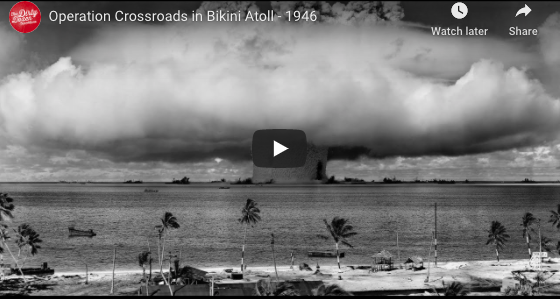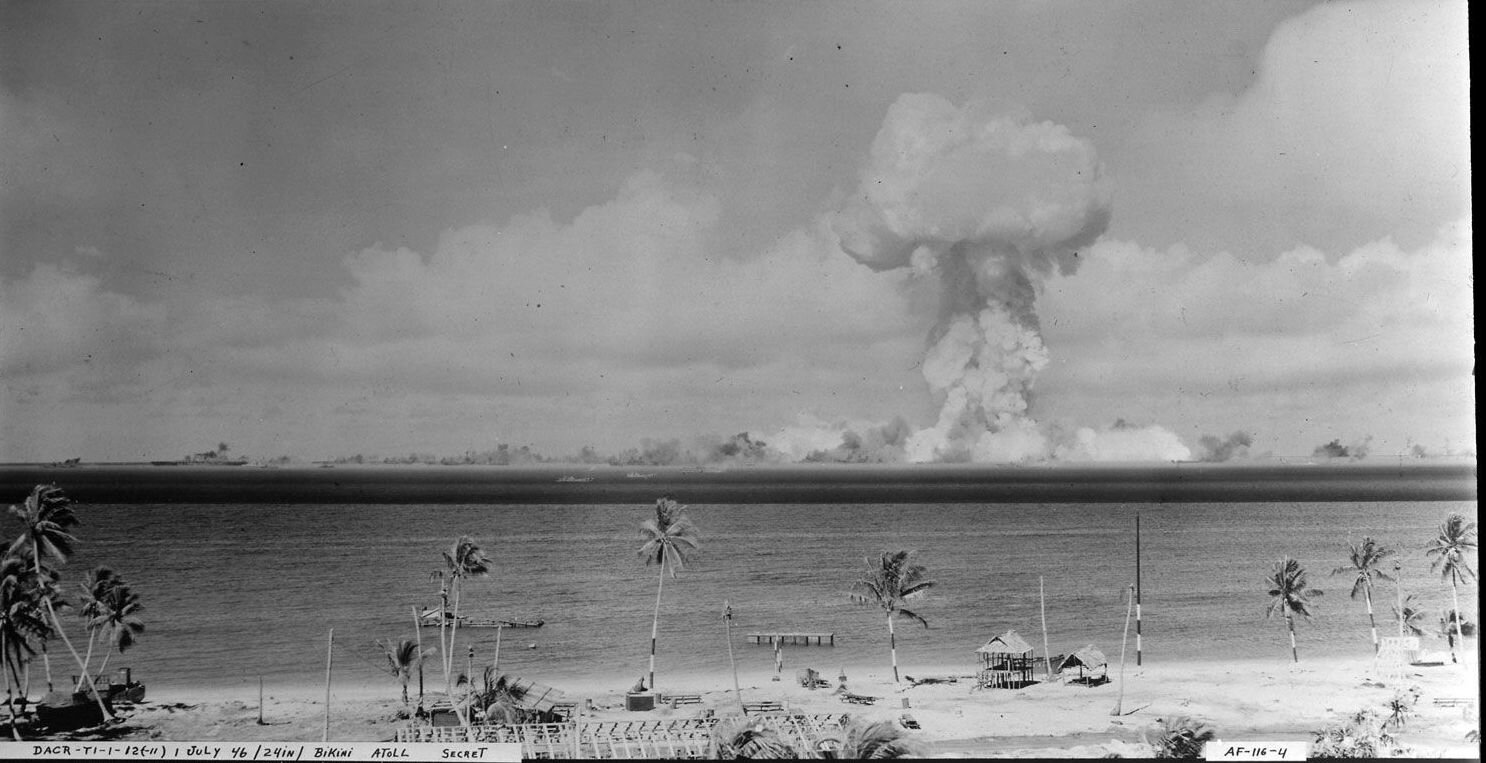Dear Dirty Dozen Member,
I hope this message finds you well.
During the month of July, we have been taking time to reflect on one of the most famous weapons test series in history, Operation Crossroads. The test took place in Bikini Atoll, Marshall Islands from 1 - 25 July, 1946.
What initially began as nuclear weapons testing on warships ended up as a total of 23 tests including Castle Bravo, with nuclear testing ending in 1958 with a combined yield of mindblowing 42 megatons.
Today, Bikini hides it’s explosive past under the surface of immense beauty and intriguing surroundings. After being out of the spotlight in more recent world history, Bikini Atoll became the site for the world’s media, government dignitaries and half of the world’s cinema equipment to capture harrowing scenes witnessed on a global scale that unknowingly would be more destructive and devastating than anyone could have imagined.
A total of 242 naval ships, 156 aircraft, 25,000 radiation recording tools and 5,400 animals arrived. The latter were to serve as test subjects. More than 42,000 US personnel played a part in the testing program under the lead of President Harry Truman.
Unluckily for Bikini in retrospect, it’s isolation meant it was a perfect location for Operation Crossroads. After church one Sunday, Navy Commodore Ben H. Wyatt gathered the hundred and sixty seven native Bikini Islanders and asked them to leave their home so the US could begin testing bombs. He stated it was for “the good of mankind and to end all world wars.” King Juda, the Bikini monarch, was understandably confused but entered into discussions with his people.
They decided to leave: “We will go believing that everything is in the hands of God.”
The first test that took place on 1st July 1946 was called Able, and the actual bomb itself was “Gilda”. With the power of 23 kilotons, same as Hiroshima, it was dropped from the air from a B-29 airplane, on top of USS Nevada that was painted bright orange for the occasion. As the crowds watched on the bomb exploded 500 ft above sea level.
The fourth atomic bomb ever to be detonated was decorated with a photograph of Rita Hayworth or “Gilda” cut from the June 1946 issue of Esquire magazine
Three weeks later they were back at it again, only this time they were going for the underwater approach. Keen to test if the military could knock out a whole flotilla from a single sub shot, they positioned the bomb 400 yards from the American attack submarine, Pilotfish, who had made six successful tours of the pacific during its service.
Detonated at 27m/88ft underwater beneath LSM-60, the 23 kiloton bomb, named Helen of Bikini, was released from the torpedo chamber on the 25th July, 1946, no part of LSM60 has been identified to this day, presumed vaporised by bomb.
In total, 95 vessels were caught in the crossfire of the Able and Baker bombs dropped on Bikini Atoll.
USS Arkansas, at 26.000 tons being flipped up in the air like a leaf in the wind.
Today the nuclear refugees are still without their island home due to increased radiation levels and the only residents habiting Bikini are a handful of caretakers.
From the misery and destruction wrought by the nuclear tests, Bikini’s nuclear ghost fleet has risen to the top of every wreck junkies bucket list to visit in the name of exploration and historical importance.
At DDE we believe wreck diving is a very unique part of scuba diving. Our founder Aron Arngrímsson recalls spending his career on coral reefs, deep walls, in mines or in caves, but the real thrill came when he went on his first wreck expedition to discover USCGC Alexander Hamilton off the coast of Iceland in 2012 and subsequently lay a memorial plaque for the 26 men still onboard.
For the DDE team it is about having good intentions, and for us education is at the forefront of our expeditions. We enjoy researching wrecks, discussing with the team about the events of the past which brings to life the happenings that led to atrocities, and then go on to see first-hand the impact of these decisions. For the team, this could not be more of an anti-war message.
The human factors of lives lost in a conflict, war, nuclear tests should be remembered and behind every wreck is a story to be told, artifacts to be discovered or heroes to be honored.
Let’s make it clear that we are aware we maybe come across as having a morbid fascination with dark tourism, when in fact it is quite the contrary. Our team believe we should make history real, and immerse ourselves in environments that we can learn from so that we may spark change for the future.
Sonar image of Bikini Atoll by Art Trembanis of the University of Delaware
USS Saratoga Schematics - Download Here!
This can help the current and next generation to be responsible and prudent guardians of the past as we make it our responsibility to share the full story of this rarely visited and unique place.
We also take into account the environmental impact events of the past have affected the destinations we visit. It should come as no surprise that some wrecks could pose to be incredibly hazardous, just check out the image below to see for yourself.
Navy photo by LeighAhn Ferrari, chief mate, U.S. Naval Ship Salvor
In 2018, as we descended onto the famous heavy cruiser Prinz Eugen in Kwajalein, we were the last divers to see that wreck that year. After our visit the military hot tapped 229.000 gallons of oil from the wreck before it became a biological disaster, as you can imagine the devastation that alone would wreak on the surround delicate ecosystem of Kwajalein.
Commercial Divers from U.S Navy hot tapping Prinz Eugen in 2018. Photo courtesy of U.S Navy
Therefore, as we grow as a company, we are establishing more collaborations with research organizations like Major Projects Foundation, which through their incredible work help to contain environmental disasters before they happen. Stay tuned to follow our story as it develops.
Dirty Dozen Team Members Antti Apunen and ZB at the Prinz Eugen the following year after the Navy operation.
Important Availability Update
DDE has sold out our 2021 Bikini Atoll season as we informed you two weeks ago, and now as a roll on effect on top of usual demand, we only have availability on two dates left in 2022, see calendar below. After that, we start selling 2023. Bikini was always a destination you had to plan ahead for, but current situation has brought dive plans to a whole new level.
Drop us a line now to discuss how you can join onto one of our excellently curated, and considered expeditions.
Check out our other calendars: HERE!
As always, we hope you all had a great week and have some fun plans this weekend. If not, or even if you do, don’t forget, if you feel lonely, we are here to chat Dirty.
Love,
Aron Arngrímsson and the DDE Team
















